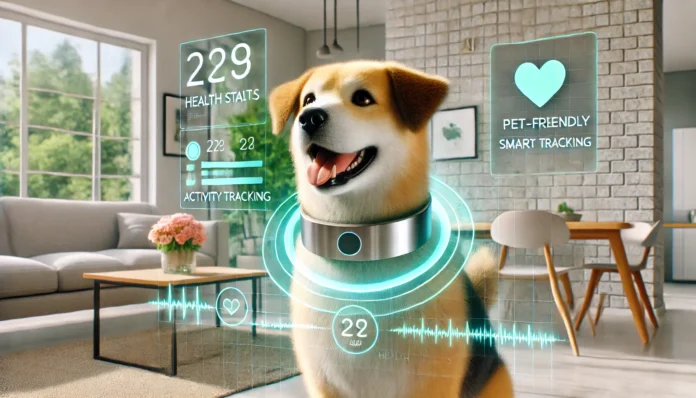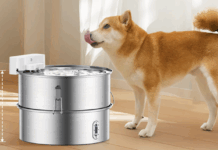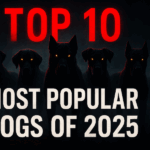Last Updated on February 16, 2025 by Dogs Vets
Introduction
The bond between humans and dogs is entering a transformative era. By 2025, artificial intelligence (AI) and wearable technology are redefining how we care for our canine companions, merging cutting-edge innovation with compassionate pet parenting. From collars that predict illnesses to AI-driven nutrition plans, these advancements are not just enhancing convenience—they’re extending lifespans, deepening bonds, and empowering owners with actionable insights. This article explores the groundbreaking technologies shaping dog care in 2025, offering a roadmap for pet owners to navigate this tech-driven future.
1. AI-Powered Wearables: Beyond Basic Tracking
Wearable devices have evolved from simple GPS trackers into sophisticated health guardians. In 2025, smart collars like PetPace Health 2.0 and Whistle Health & GPS+ monitor vital signs such as heart rate, respiration, and hydration levels in real time, alerting owners to abnormalities like arrhythmias or dehydration . The SATELLAI Collar, unveiled at CES 2025, integrates satellite tracking and AI to create virtual boundaries up to 100,000 acres, ensuring pets stay safe during outdoor adventures .
Key Innovations:
- Predictive Health Alerts: AI algorithms compare data against breed-specific baselines to flag early signs of arthritis, diabetes, or Lyme disease .
- Behavioral Insights: Devices track scratching, licking, or sleep disruptions, linking them to stress or allergies .
- Solar-Powered Durability: The SATELLAI Tracker uses solar charging for uninterrupted use in remote areas .
2. AI-Driven Diagnostics: Proactive Veterinary Care
AI is bridging gaps in veterinary access. Platforms like TTCare analyze photos of a dog’s eyes, skin, or gait to detect infections, dental issues, or joint problems, trained on 2.5 million veterinary scans . Telemedicine services like Vetster and Pawp offer 24/7 consultations, reducing ER visits by 60% .
Case Study:
- PetPace’s Pregnancy Tracker: Breeders use AI collars to monitor gestation, predicting labor timing and detecting complications .
- Earthquake Warnings: Studies in Peru leverage dogs’ sensitivity to seismic activity, with wearables alerting owners to behavioral shifts before quakes .
3. Personalized Care: Genomics and Tailored Nutrition
DNA testing kits from Embark and Wisdom Panel identify genetic risks for conditions like heart disease or IVDD, enabling “DNA health plans” that pair genomic data with customized diets . Companies like Nom Nom use AI to craft 3D-printed kibble for senior dogs or protein-rich meals for active breeds .
2025 Trends:
- Allergy Forecasting: DNA tests predict food sensitivities (e.g., chicken, wheat) before symptoms arise .
- Activity-Based Calorie Adjustments: Smart feeders sync with wearables to dispense portions matching a dog’s exercise levels .
4. Telemedicine and Virtual Vet Care
Virtual vet platforms now integrate holographic consultations, allowing vets to assess gait or wounds via augmented reality (AR) . AI chatbots triage non-emergencies, while apps store vaccination records and send check-up reminders .
Benefits:
- Cost Savings: Subscription plans offer unlimited consultations, avoiding $500 ER fees .
- Continuity of Care: Chronic conditions like diabetes are managed through regular virtual check-ins .
5. Ethical Dilemmas and Challenges
While innovation excites, it raises critical concerns:
- Data Privacy: Who owns a dog’s DNA profile or health data—owners, companies, or insurers? .
- Accessibility: High costs ($500+ for smart collars) risk widening gaps between affluent and average pet owners .
- Over-Reliance: Misdiagnoses by AI tools could delay critical in-person care .
Expert Insight: Dr. Sarah Wooten, DVM, advises balancing tech with “timeless empathy” to preserve the human-animal bond .
6. The Future: VR Training, Sustainability, and Beyond
VR Training: Platforms like Joipaw simulate real-world scenarios to help dogs overcome phobias (e.g., fireworks) .
Eco-Friendly Tech: Solar-powered wearables and biodegradable toys (e.g., West Paw) reduce environmental footprints .
Biometric ID: Nose-print scanners replace traditional tags for foolproof identification .
Frequently Asked Questions
- Are AI wearables safe for all dog breeds?
Yes. Most devices are adjustable and tested for safety. For example, the SATELLAI Collar is IP68-rated for durability . - Can AI replace veterinarians?
No. AI supplements care by enabling early detection, but critical issues require vet expertise . - How affordable are these technologies?
Prices vary. Trackers like Tractive GPS start at $49, while advanced collars cost $200+ . - Do DNA tests improve longevity?
Yes. Early genetic risk detection allows preventive care, potentially adding years to a dog’s life . - Is my dog’s data secure?
Reputable brands encrypt data, but owners should review privacy policies before sharing .
References
- Pet Tech 2025: Innovations in Wearables and Telemedicine | The Flockhouse
- 2025 Dog Trends: GPS Collars and AI Training | Canine Journal
- SATELLAI Collar: Satellite Tracking for Pets | SATELLAI
Conclusion
The 2025 revolution in dog care is a testament to humanity’s commitment to its loyal companions. By embracing AI and wearables—while navigating ethical challenges—we can ensure dogs live longer, healthier, and happier lives. Whether through a collar that texts your vet or a DNA-tailored diet, the future of pet care is smarter, kinder, and infinitely more connected.

















